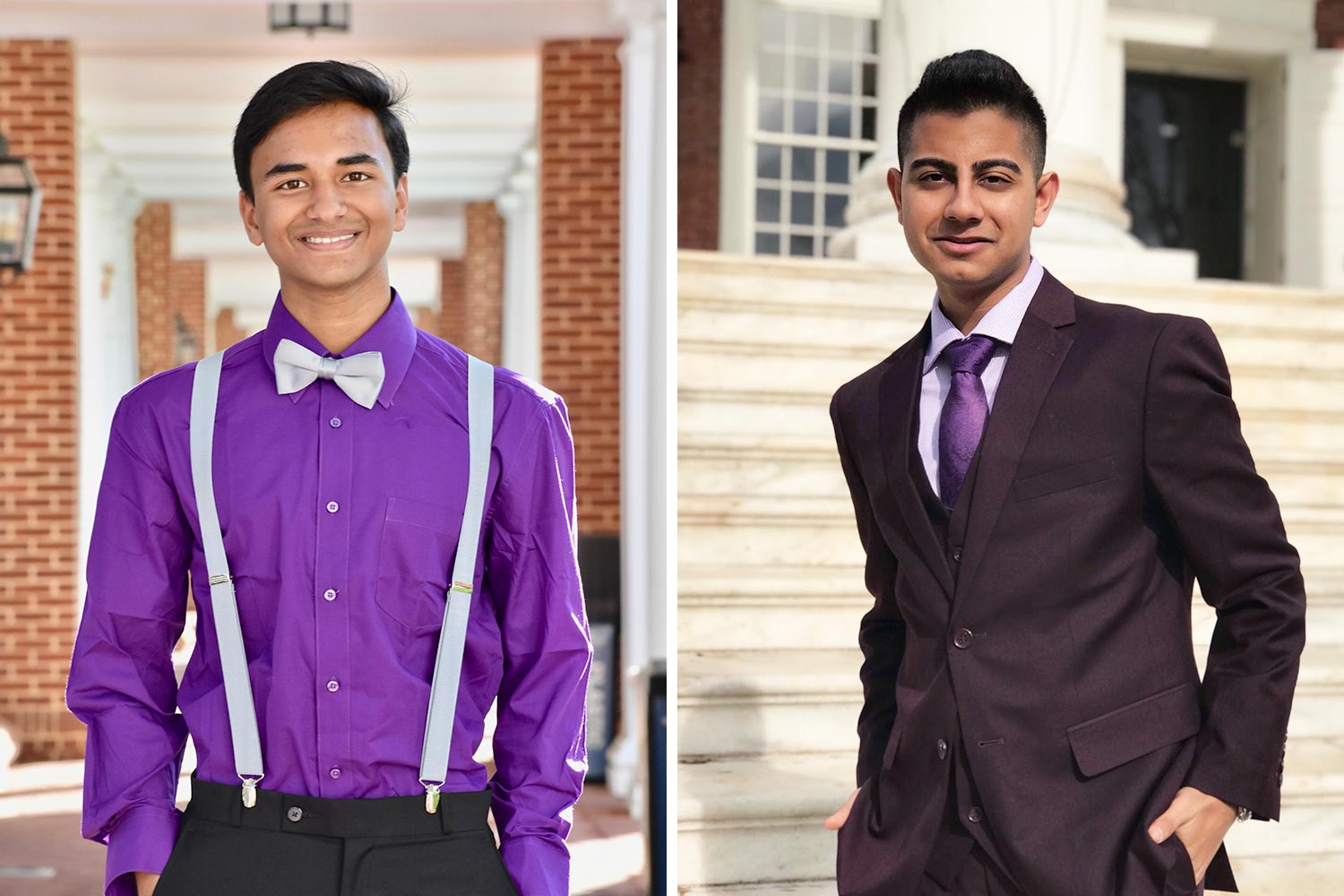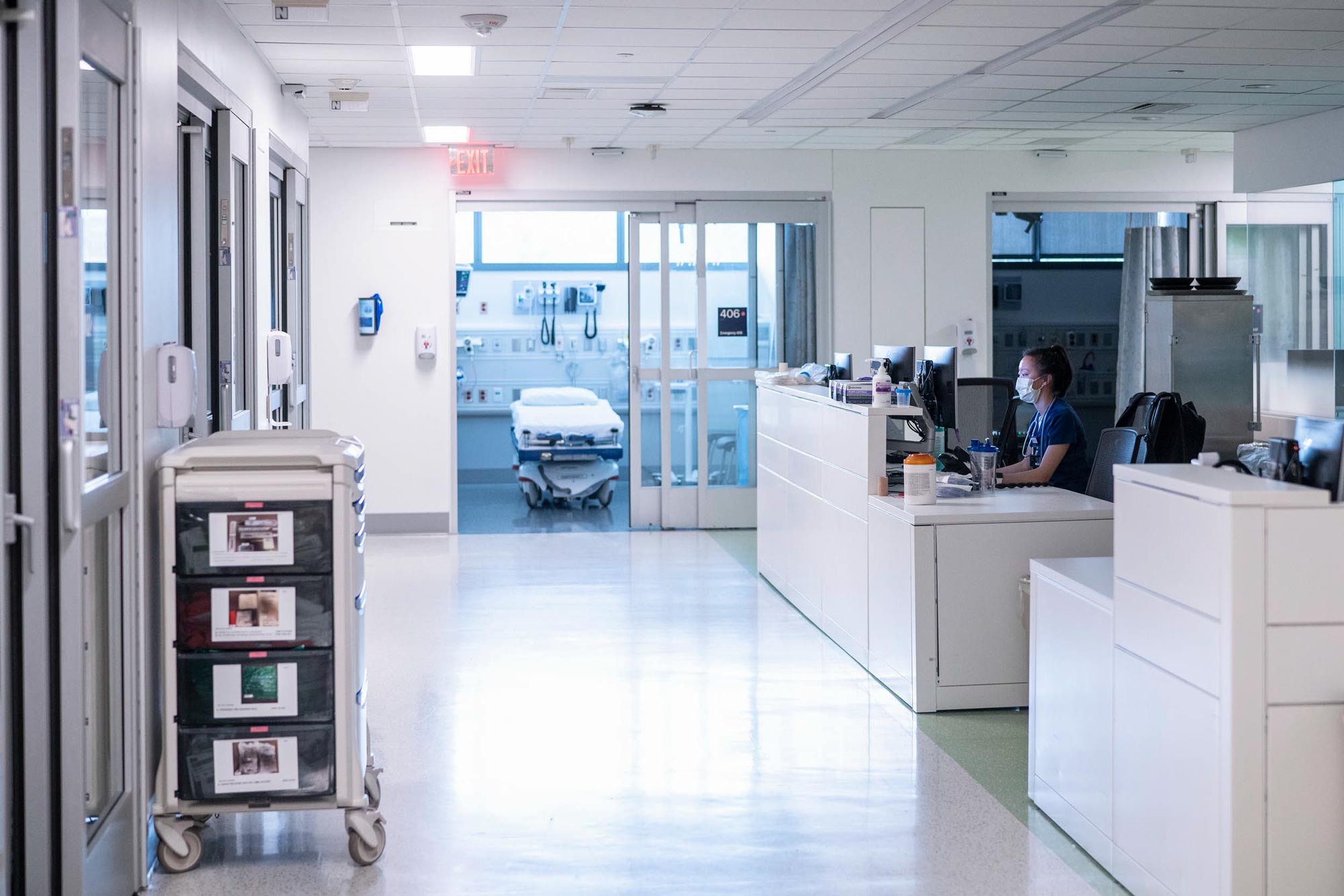Rising second-year student Rithvik Gundlapalli is using his time away from the University of Virginia to work for a change in the way hospitals are run.
With his friend Rohan Arora, a fellow Northern Virginian and rising second-year student at Virginia Commonwealth University, Gundlapalli is developing an innovative technology that could fast-track patient intake for overwhelmed hospitals during crisis situations such as the COVID-19 pandemic.
Gundlapalli’s system, called TriageConnect, allows patients to enter their medical history information online and entirely offsite, thereby reducing the amount of traffic in overwhelmed emergency rooms.
Instead of having a doctor or nurse question the patients in person, Gundlapalli’s system allows these preliminary off-site questions to determine if the patient should visit the E.R. at all. This keeps contagious diseases out of the hallways of hospitals and stops the overflow of overcrowded emergency rooms, keeping both current and future patients safe.
“In order to decrease onsite disease transmission, we created an online triage system,” Gundlapalli said. “A hospital will send this link to any patient who wants to come to the E.R., and they will answer a couple questions about diagnostic and medical history information.”
The information is then transmitted directly to the hospital so health care professionals can determine within minutes if the patient is an immediate priority, or should be sent elsewhere.
“It’ll prevent people from coming into the E.R. when they don’t need to,” Gundlapalli said.

The students created TriageConnect using New York’s health care system as a case study.
“In New York, they have doctors and nurses looking at each person before they’re sent into the E.R.,” Gundlapalli said. “If a patient has COVID-19, they’re sent somewhere, and if the patient doesn’t have COVID-19, they’re sent somewhere else.”
To Gundlapalli and his team, this system is a waste of resources. Doctors who could be treating patients are instead screening potential patients at the door, and patients who may need immediate assistance are wasting time in a waiting room.
“They’re risking contamination, and they’re risking people who don’t have COVID-19 getting it,” Gundlapalli said. “There have also been cases of patients being sent home from the E.R. with little to no treatment because of their current priority level, and that also puts the patient’s family and friends at home as risk.”
TriageConnect was the team’s solution to this dilemma.
“We saw how COVID-19 cases across the country were rising at extreme rates, and after personally witnessing community members fall victim to the virus, we decided we as youth had to step up and do our part,” Arora said.

Rising second-year Rithvik Gundlapalli and friend Rohan Arora created TriageConnect to contribute to the fight against COVID-19. (Contributed photo)
Gundlapalli and Arora recently presented their system to a panel of professionals at the Massachusetts Institute of Technology’s COVID-19 Challenge.
“We collaborated with a couple mentors who were up-and-coming health care professionals, scientists and engineers,” Gundlapalli said. “They gave us some feedback on our system.”
Next, the team is confronting the health care language barrier. Aware that E.R. patients often suffer from lack of language resources, Gundlapalli is working to incorporate different language settings into TriageConnect. For him, this is the next step toward accessible health care.
The benefits of TriageConnect don’t stop with the COVID-19 pandemic.
“As we discuss integration with more health care systems and clinical settings, we hope to cater our technology to each of their respective needs. This would take into consideration their concerns regarding liability and malpractice,” Gundlapalli said. “Although this has immense promise for the current pandemic we are in, this technology has unparalleled potential for implementation in non-emergent settings, specifically in patient intake protocol.”
According to Arora, the pair hopes to form their own business venture focused on developing sustainable solutions in the health and environmental sectors. They plan to implement their technology across a variety of health care systems, creating a safer and healthier world one triage at a time.
Media Contact
Article Information
June 18, 2020
/content/students-invention-triages-patients-they-reach-er

